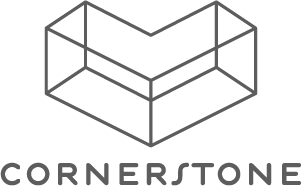And it shall come to pass that everyone who is left of all the nations which came against Jerusalem shall go up from year to year to worship the King, the Lord of hosts, and to keep the Feast of Tabernacles.” Zechariah 14:16
The Feast of Booths, or Sukkot, provided the Jews a time to remember how God had delivered His people from bondage, in addition to making provision for them in the wilderness. This moment allowed them to reflect upon their deliverance, while looking forward to something new.
Of all the Feasts, Sukkot is surely the one that speaks most powerfully to our time. As believers, we celebrate Sukkot due to the prophetic purpose hidden in this unique festival. Its significance is unfolding today which includes its link to the Second Coming of the Lord. The Feast of Tabernacles points to the coming Millennial Age where Christ will rule over the nations of the world for 1,000 years. Zech 14:3-15 confirms this in describing the Second Coming of Christ. The Lord’s millennial reign is referenced in vs 16.
The SukkahThe most visible symbol of Sukkot is the small hut or booth (Sukkah) which the Israelites were commanded to dwell in during the Feast of Tabernacles (Lev 23:33-43). Jewish families across Israel built these booths on their patios and balconies. They were decorated with colourful fruit, ribbons and pictures. Some families ate their meals and slept at night in the Sukkah during this Feast.
Perhaps, this was what Peter had in mind when suggesting the building of three booths at the Mount of Transfiguration (Matt 17:4).
Three TabernaclesJesus brought three of His disciples up on the slopes of a “high mountain,” probably Mount Hermon. Six days after the prediction of His death in Jerusalem, He gave them the affirmation of His glory, divine nature, and coming Kingdom through His “transfiguration” on the mountain where His true glory was revealed.
Suddenly, Moses and Elijah also made glorious cameo appearances. They spoke of Jesus’ “departure” at Jerusalem; the very event Jesus had just revealed to His disciples in Caesarea Philippi (Luke 9:31). Peter then suggested building three tabernacles: one for Jesus, one for Moses, and one for Elijah. The fact that this remark is specifically recorded in Holy Scriptures helps in linking the Transfiguration of Jesus to the spiritual significance of the Feast of Tabernacles to the Last Day Church (Zech 14:16-19).
What was Peter actually requesting of Jesus when suggesting the building of three booths? He was pushing for the Kingdom of God to come! He had flatly rejected what Jesus had just told them about His death in Jerusalem. It was here where God the Father intervened in stating the following: “This is My Beloved Son; with whom I am well-pleased; listen to Him!” (Matt 17:5)
The transfiguration confirmed that the only pathway to glory for Peter and the disciples would be through the Cross. There was no going around it. Even in the presence of Christ’s glory on the mountain, Moses and Elijah spoke of Christ’s death, or “departure” – literally, in the Greek, His exodus (Luke 9:31).
Kingdom Now and Not YetThe Kingdom of God will come. Jesus confirmed this to His disciples but made clear there’d be a cross to bear (Mark 8:34). “Our road to glory has splinters from the cross we bear.” Wayne Tiles
“Looking unto Jesus the author and finisher of our faith; who for the joy that was set before him endured the cross, despising the shame, and is set down at the right hand of the throne of God” (Heb 12:2).
The Kingdom of God will never be fully realised apart from the personal, glorious, victorious Coming of Christ. Men cannot build the Kingdom of God; Christ will bring it. And that day is coming! The Word of God urges us to watch, to be awake, to be ready while waiting for that Day. What assurance, what comfort, what stability it gives to our hearts and minds to know that our prayer will certainly be answered: “Thy Kingdom come, thy will be done on earth, as it is in heaven.”
Yea, come quickly, Lord Jesus!








